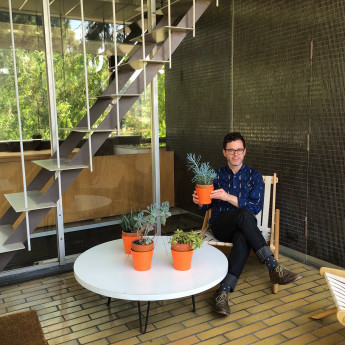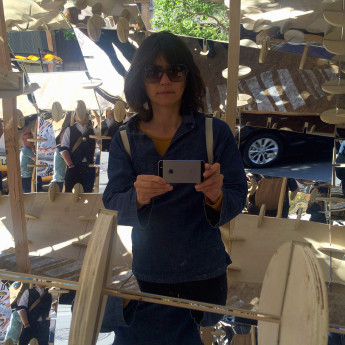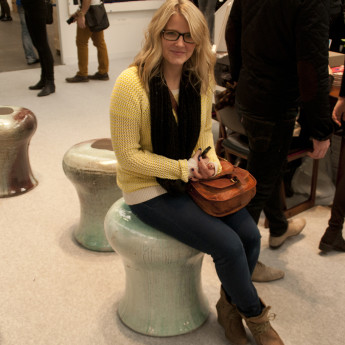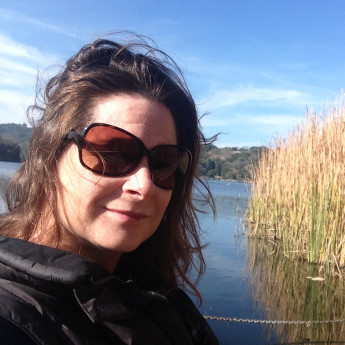This is a fast-moving target! I recommend that my clients treat Facebook and LinkedIn (for principals) like the Yellow Pages. In other words, they are essential. The corporate Facebook, Twitter (which is easy to use), and LinkedIn accounts for the principals should be responsibility of the marketing staff. This is the minimum to be visible. Many architects have been favoring Instagram recently because it is so visual. I think social media platforms, beyond the basics, are most successful if they are rooted in individual preferences. If somebody isn’t interested, there isn’t much point in pressuring them to be involved with social media. I decided to check in with some of my pals in communications within the design industry to hear what they had to say.
William Hanley
William Hanley is a New York–based design writer who is preparing to launch a new interior architecture website. He is also a former senior editor at Architectural Record.
 Which social media platform to focus on depends on what kind of interactions you want to have. For designers, photographers, and other visually oriented people, Instagram is an obvious choice for showing off both your work and your eye, in addition to tagging along with interesting people you follow and watching them observe the world. But Instagram downplays dialogue in favor of pretty pictures—and no shortage of visual bragging—in an economy of capricious likes that can feel more like a popularity contest than a conversation. If you want to engage in discussions and present your perspective, you might want to save your energy for Twitter. We concentrated on Twitter when I was an editor at Architectural Record, a publication one might expect to prefer a more visual platform (Twitter still handles images terribly), because it allowed us to report news and offer commentary on goings-on in the architecture world in the context of an running discussion. The great thing about the platform is how it accelerates traditional reporting and criticism. Personally, I’m not a prolific Tweeter, but I still find most of what I read throughout the day there.
Which social media platform to focus on depends on what kind of interactions you want to have. For designers, photographers, and other visually oriented people, Instagram is an obvious choice for showing off both your work and your eye, in addition to tagging along with interesting people you follow and watching them observe the world. But Instagram downplays dialogue in favor of pretty pictures—and no shortage of visual bragging—in an economy of capricious likes that can feel more like a popularity contest than a conversation. If you want to engage in discussions and present your perspective, you might want to save your energy for Twitter. We concentrated on Twitter when I was an editor at Architectural Record, a publication one might expect to prefer a more visual platform (Twitter still handles images terribly), because it allowed us to report news and offer commentary on goings-on in the architecture world in the context of an running discussion. The great thing about the platform is how it accelerates traditional reporting and criticism. Personally, I’m not a prolific Tweeter, but I still find most of what I read throughout the day there.
Yosh Asato
Yosh Asato is a communications consultant to the design industries (and my office mate!).
 As with people, I encourage firms to do what fits their style, especially when they’re just starting out. I’m a big fan of Facebook because of its visual nature and the way the platform allows more latitude for sharing ideas than Twitter’s one-liners. Since Twitter enhanced its photo functions last year, though, it has become a more impactful tool for communicating visual information. Both Facebook and Twitter are powerful and inexpensive tools for smaller and midsize firms.
As with people, I encourage firms to do what fits their style, especially when they’re just starting out. I’m a big fan of Facebook because of its visual nature and the way the platform allows more latitude for sharing ideas than Twitter’s one-liners. Since Twitter enhanced its photo functions last year, though, it has become a more impactful tool for communicating visual information. Both Facebook and Twitter are powerful and inexpensive tools for smaller and midsize firms.
It’s almost as though Instagram was made for architects; it’s the natural successor to the travel slide show (remember those?). It’s very personal, too, so perfect for design architects seeking to connect but not inclined to share on more chatty platforms.
I’m also encouraging firms to try Pinterest as a research and visioning tool. It’s also a place to share their work, but its real value is about connecting through ideas. Ideo, perhaps not surprisingly, offers a great example of how it’s done.
Video, of course, is playing a much larger role across all of these platforms. That’s a whole other conversation!
Emily Hooper
Emily Hooper is the new media specialist at IA Interior Architects. She has also worked for Contract and The Architects Newspaper.
Video is one of the most important mediums for your firm’s social presence, and it doesn’t have to be a professionally-produced YouTube video anymore. Facebook and Twitter both are embracing the value of video as each platform constantly improves capabilities to capture video content within their platforms. To some degree, this began in 2013 when Vine brought Twitter into the video game, as did Instagram when it was purchased by Facebook. But in Q1 of 2015, there are easily accessible options in both mobile apps to record video that publishes to your respective feed. Native video—or that shot in Facebook and published to Facebook, or those 30 seconds of video captured in Twitter and then posted to Twitter—is increasingly relevant. Facebook’s algorithm is reportedly prioritizing native video in its feed over video brought in from YouTube.
Live video streaming from your phone is also a great option, and provides great opportunities for architects to demystify their process and priorities. Video can be definitely be orchestrated and produced—in some cases this is still the best option—but apps like Meerkat and Periscope (both released in March of this year) publish a live video feed to Twitter, so viewers see everything, warts and all. While brands should still be thoughtful about the image they portray with this “all access” style of video, it’s an effective way to add a human component to the structural drawings and monumental photography that typically populates an architecturally-focused social account.
Jenna McKnight
Jenna is the digital editor for SOM. Previously, she worked at Architizer and Architectural Record.
 My favorite is Instagram. There’s a reason why it’s the fastest-growing social media platform: it’s simple and fun to use. I love scrolling through my feed and seeing all of the wonderful photos that users post.
My favorite is Instagram. There’s a reason why it’s the fastest-growing social media platform: it’s simple and fun to use. I love scrolling through my feed and seeing all of the wonderful photos that users post.
For architects, it’s a great place to document the full lifespan of a project. You can present sketches, then construction shots, then photos of the completed building.
It’s also a great venue to showcase the inner workings of your firm—and your firm culture. All that said, be judicious. Curate the content. Post images that align with your firm’s brand and mission, and make sure the images are good!
Amanda Walter
Principal at Walter Communications and author of the A/E guidebook, Social Media in Action
Yes, blogs are time-consuming, but the upside of consistently creating your own content is significant and measurable. The most important part is that your content be GOOD and USEFUL to your audience. Then push out the link through your social media channels to attract readers. Watch your web analytics to determine what social channels are sending you the most engaged readers and which content they like best.

